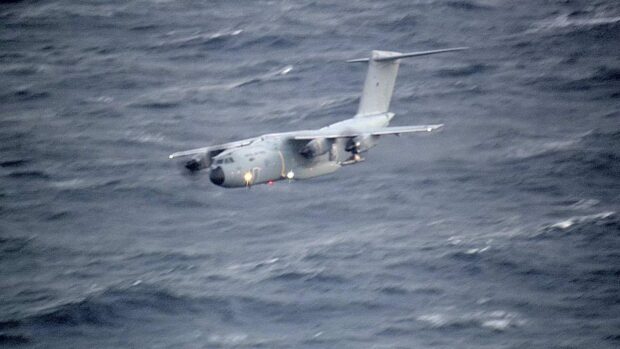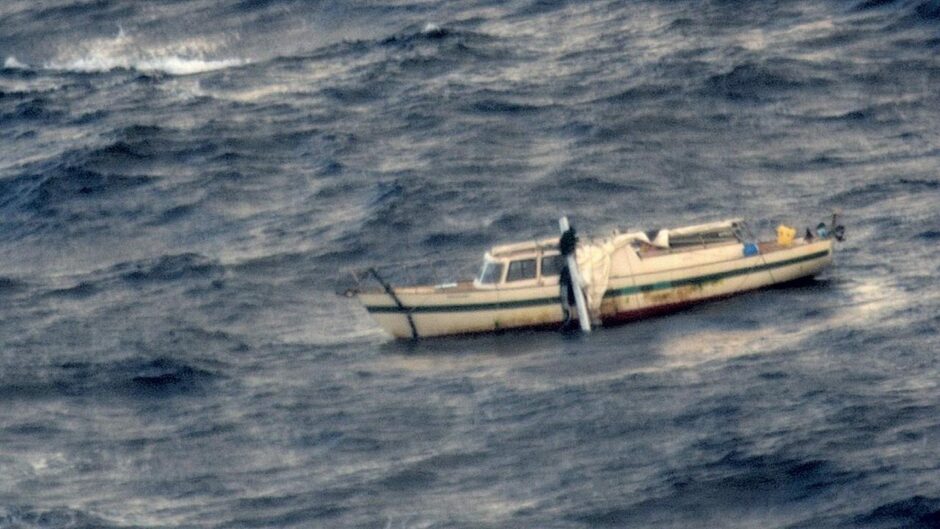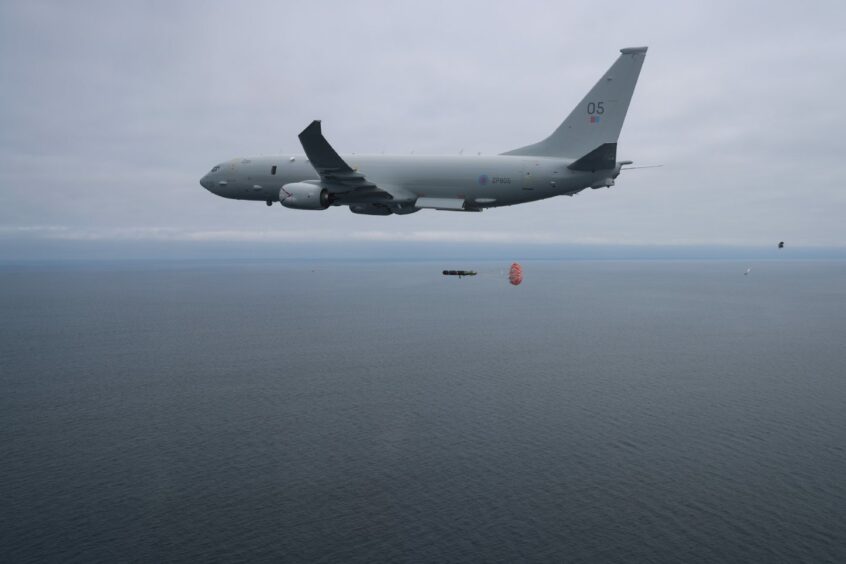A RAF Lossiemouth crew called to save a sailor from 40ft waves in the Atlantic have shared their story – describing the rescue as a “challenging undertaking”.
The Poseidon team was scrambled to assist the yacht, which lost its mast in stormy conditions, last October.
Today, they shared dramatic details of the rescue on BBC’s Critical Incident – revealing the experienced American sailor’s chances of survival had been described as “pretty low” when they received the call from the coastguard.
The Atlas dropped life rafts into the water near the ship while the Poseidon created a communications uplink with the sailor to help direct a rescue ship to the location.
The next day, the experienced American sailor – who was travelling between Greenland and the UK – was picked up by tanker Amax Antham, after four unsuccessful attempts by a merchant vessel overnight.
Critical Incident show highlights RAF Lossiemouth
The rescue took two-and-a-half days to complete with the RAF making three flights to the boat.
The Poseidon from Lossiemouth attended twice, and an Atlas A400M from Brize Norton was tasked to drop emergency supplies.
A Poseidon P-8 from @RAFLossiemouth & an Atlas A400 from @RAFBrizeNorton undertook a rescue mission of a sailor in distress in the Atlantic. This video documents that mission. #NoOrdinaryJob pic.twitter.com/oNB8K8Ma2A
— Royal Air Force (@RoyalAirForce) October 17, 2022
However, even finding the vessel in the first place caused the military some concerns.
The vessel’s mast, which held its beacon, had snapped off the boat leaving radar signals patchy at best.
Traditionally the HM Coastguard responds to emergencies at sea, but in this situation where time is critical, the RAF can be called in for support.
Wing Commander Ben Livesey, OC CXX Sqn, P8 Poseidon, received a call at 10.30pm on October 14 last year.
The wing commander told Critical Incident: “It was a pretty complicated task.
“The conditions in the winter or in the autumn period tend to be considerably worse – because that is the time when you have heavy depressions in the Atlantic.”
The Boeing PA Possideon was “absolutely ideal” for the task. It is equipped with a surface search radar.
“To find a 49ft yacht in a 40ft sea is a particularly challenging undertaking. You can’t necessarily detect the yacht,” Wing Commander Livesey said.
“We were ready to take off at 2am, but delayed it until daybreak to give a better chance of a successful mission.”
‘It was difficult’
Waves were described as being two houses high in a “pretty angry sea”.
There were no indications that the man was still alive, and due to the distance, crews were mindful of limited fuel supplies.
Captain Phil Clements said: “Conditions at sea can change in an instant. Storms can come and go in a matter of minutes.
“I was very aware that it was a human life out in the mid-Atlantic and no one else was coming to save them.
“When you are searching for a yacht everyone has to work together to find the objective.
“It was just over three hours to the scene of action. It was bumpy and windy.”
It took 45 minutes to find the yacht, and initially there were no signs of life.
But after the co-pilot was instructed to fly over it and rev the engines, the sailor popped his head out rom below deck.
Due to poor radio equipment aboard the boat, the yachtsman could hear the Poseidon crew, but they could not hear him.
Safe and uninjured
Instead they used a series of clicks in response to questions. It was one click for yes, two for no – enabling them to confirm the man was safe and uninjured.
The crew then used the Atlas to drop emergency equipment for him.
In the pack, there was signalling equipment, food and a life raft to make the man’s further wait to be as comfortable as possible.
The next stage was a rescue by ship – THV Patricia, which was tasked by the RAF to attend.
A second Poseidon from RAF Lossiemouth watched over the safe transfer of the man to the vessel.



Conversation